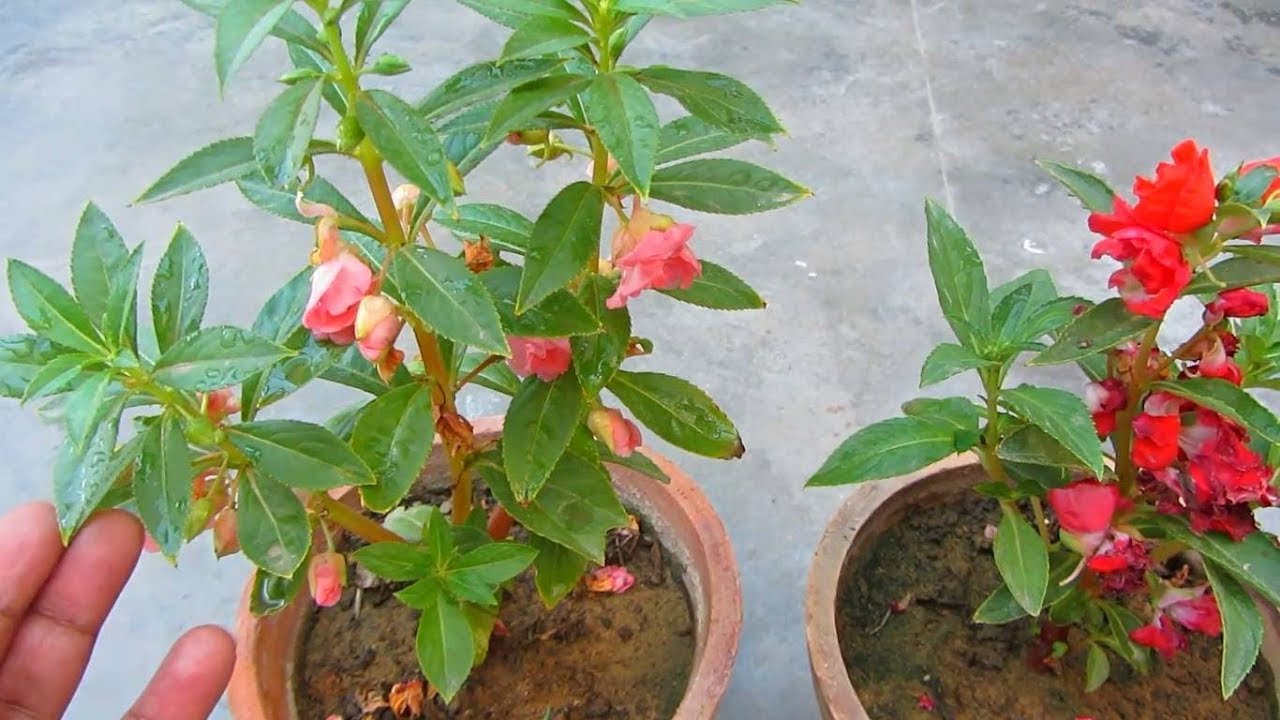If you’ve noticed your beloved balsam plant growing in an abnormal sideways direction it can be worrying. A plant that’s growing sideways rather than upright is often a sign that something is wrong. Don’t fret – in most cases a sideways growing balsam plant can be corrected with a few simple fixes.
In this article, we’ll explore the top reasons why a balsam plant may start growing sideways, leaning, or otherwise appearing abnormal. We’ll also give you tips on how to get your balsam back to growing straight and tall!
Common Causes of Sideways Growth in Balsams
There are a few key reasons why balsam plants can start displaying abnormal sideways growth:
Insufficient Light
One of the most common causes of abnormal growth is a lack of adequate sunlight. Balsam plants thrive in bright direct light. When light levels are low the plant will begin stretching and leaning towards any available light source. This results in uneven, sideways growth as the plant desperately tries increasing its light exposure.
If your balsam is in a spot that only receives a few hours of filtered sunlight a day, it likely needs more light. South or west facing windows are ideal indoor spots. Outdoors, choose a location with at least 5-6 hours of direct sun. If natural light is limited, supplement with grow lights.
Weak Root System
A young balsam with underdeveloped roots may struggle to anchor itself properly in the soil. Without a vigorous root system to hold it stable the top-heavy plant can start leaning or falling to one side.
Make sure young balsams are planted in loose, well-draining soil. Water thoroughly after transplanting to encourage root growth. As the roots expand, the plant will gain stability.
Environmental Factors
Harsh environmental conditions like strong winds, heavy rain, or extreme temperature shifts can cause abnormal sideways growth. Wind can bend stems, while heavy rain can loosen roots.
Shelter balsams from intense wind and make sure they’re in soil with excellent drainage to prevent waterlogging. Avoid planting in frost pockets that trap cold air if you live in a climate with extreme winters.
Overcrowding
When balsam plants are crowded together too densely, they compete for resources, often becoming spindly and weak. This makes them prone to falling over or leaning on each other. Space balsams at least 12-24 inches apart to prevent overcrowding issues.
Damage from Pests or Disease
Pest infestations and diseases that affect roots, stems or leaves can lead to plant instability. Damaged or infected parts can’t properly support upright growth. Aphids, fungus gnats, powdery mildew and root rot are common balsam afflictions. Inspect plants frequently and take action at the first sign of pests or disease. Quarantine affected plants to prevent spreading.
Insufficient Staking or Support
Some balsam varieties can grow quite tall and produce heavy flowers. Without proper support, the plant may bend or topple under its own weight. Insert stakes next to young or unstable balsams. Tie main stems loosely to the stakes as needed until plants mature.
Correcting Abnormal, Sideways Growth in Balsams
If your balsam plant is already growing sideways, all is not lost! Here are some tips to correct the issue:
- Increase light exposure – Gradually move plant to a brighter location over 7-10 days. Rotating the pot frequently helps too.
- Add support – Use plant stakes or trellises to prop up leaning stems until they reorient themselves.
- Improve air flow – Space plants appropriately and prune densely packed branches to encourage air movement.
- Repot for enhanced stability – If roots are unstable, repotting in fresh soil can help strengthen the root system. Bury some of the lower stem for added support.
- Rule out pests/disease – Check for signs like webbing, spots, wilting. Remove affected parts immediately. Use insecticidal soap, neem oil or appropriate fungicides.
- Protect from weather – Provide shelter or cold frames to shield plants from excess wind, rain, etc.
- Wait it out – Give the balsam time to correct itself as it grows towards light sources. The plant will start new vertical growth over time. Avoid over-pruning sideways stems.
With a few simple adjustments, a balsam plant can regain its natural upright shape. Consistency is key – be sure to provide adequate sunlight, moisture, airflow and protection from elements. Your tilted balsam will be growing vertically again before you know it!
Preventing Future Sideways Growth
Once you’ve got your balsam back on track, here are some tips to prevent abnormal growth in the future:
- Choose disease resistant varieties when available
- Check lighting and rotate plants frequently to distribute light evenly
- Allow enough space between plants for air circulation
- Stake tall or flowering varieties for support
- Water at the base to keep moisture off leaves
- Add compost or fertilizer to nourish plants throughout the season
- Inspect regularly for pests or signs of disease
- Shelter plants from harsh weather conditions
- Transplant rootbound plants to prevent instability
With proper care, most balsams will thrive without issues. But if your plant does start growing sideways again, reference the fixes in this article to get it straightened out in no time. With a little diligence, you can enjoy healthy, upright balsam plants for years to come.

Fix Leggy Seedlings
FAQ
How to fix a plant growing sideways?
How to make a plant grow straight?
Why is my plant growing lopsided?
Why is my snake plant growing sideways?
